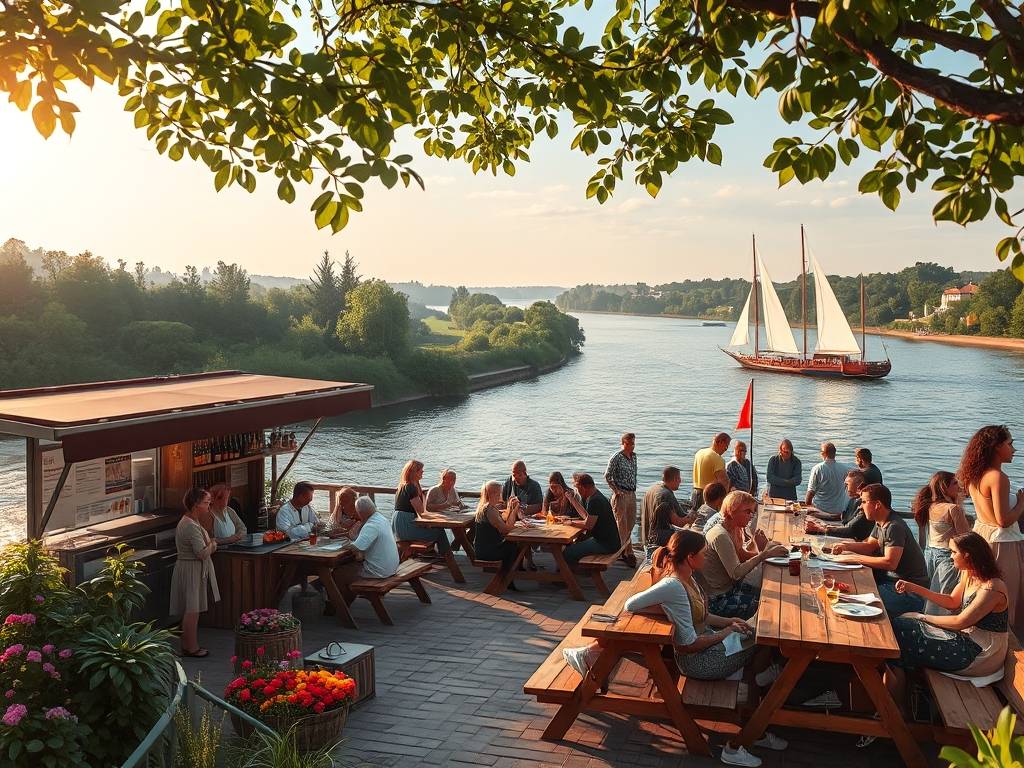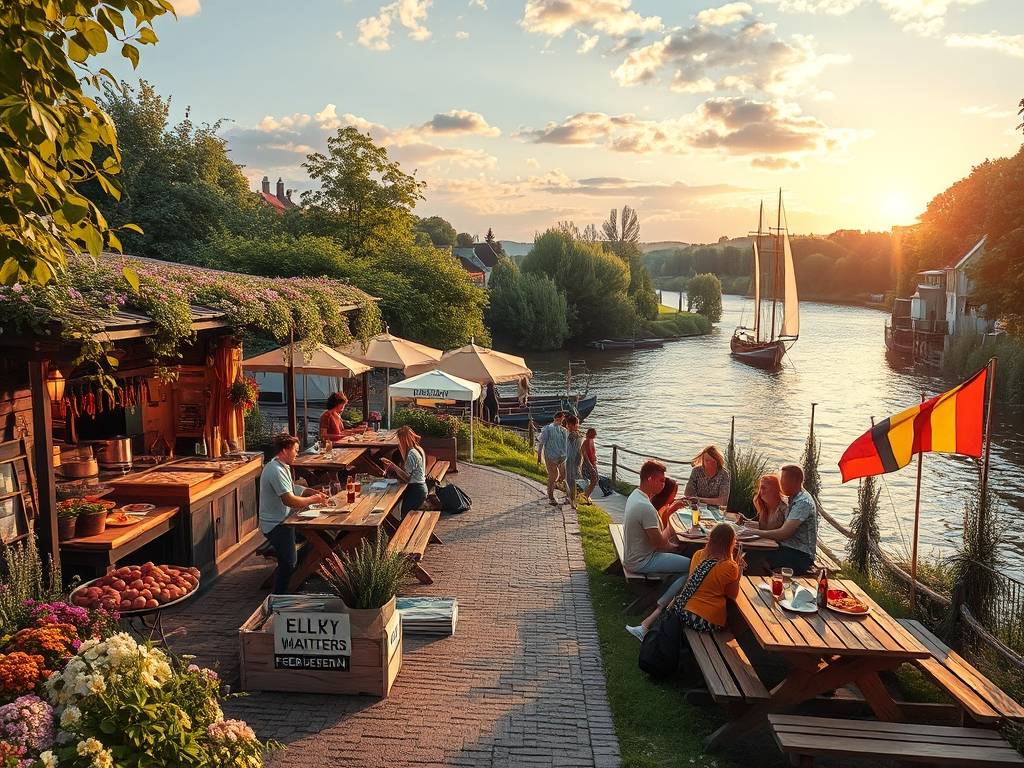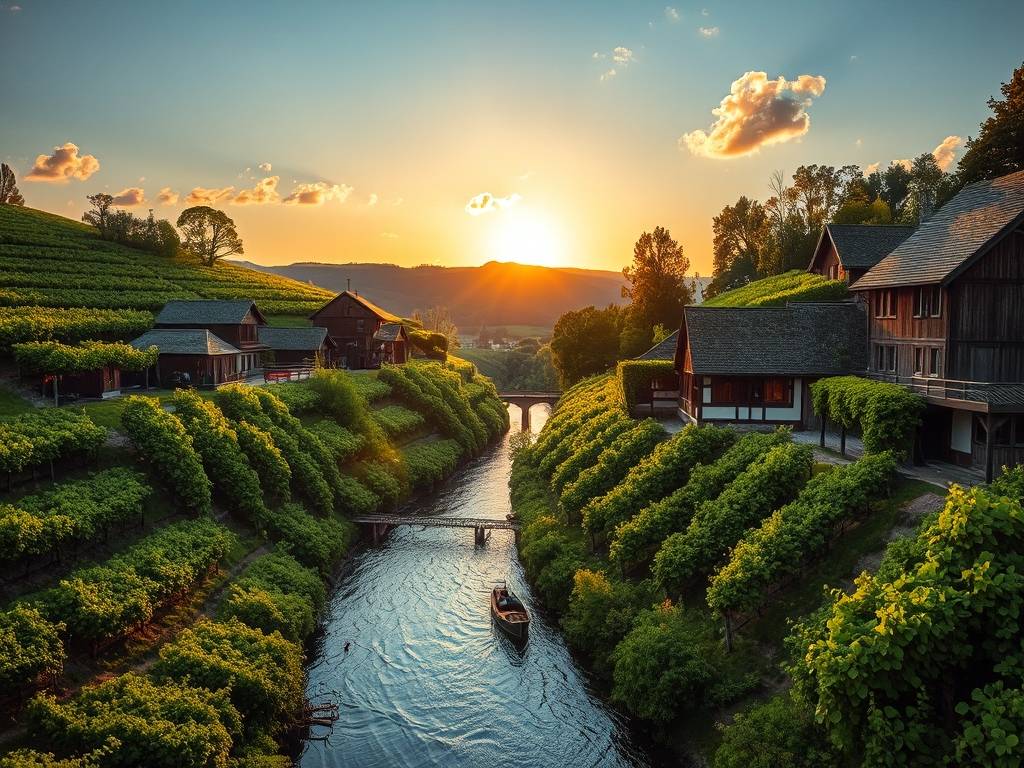Global Travel Information
Elbe River Food & Drink: Local Cuisine Along the Banks
A Culinary Voyage: Savoring the Authentic Flavours of the Elbe River
There is a unique magic to travelling along the Elbe River. From the dramatic sandstone cliffs of Saxon Switzerland to the vibrant port city of Hamburg, the landscape is a constantly shifting canvas. Yet, to truly understand the soul of this region, one must look beyond the scenery and onto the plate. The culinary traditions along the Elbe's banks are a direct reflection of its history, its people, and its terrain. This is a journey of hearty, comforting dishes born from the land and innovative, maritime creations inspired by the river's connection to the sea. Exploring the local cuisine of the Elbe River region is an essential part of the travel experience, offering a taste of place you simply can't get anywhere else.
Let's begin our gastronomic journey in the Saxon part of the river, where the landscape is lush and the history is deep. Saxony, and particularly its crown jewel Dresden, offers a cuisine that is robust, flavourful, and deeply satisfying. The cool, damp climate of the Elbe Valley demands food that comforts and sustains, and the local fare delivers perfectly.

No discussion of Saxon food is complete without the legendary Dresdner Stollen. This dense, fruit-packed bread, laden with raisins, citrus peel, almonds, and a heart of marzipan, is more than just a Christmas treat; it's a symbol of the city. The exact recipe is guarded with a passion that borders on reverence, and tasting an authentic piece is like biting into history. Enjoy it with a cup of strong coffee in a traditional Dresden café, watching the world go by. This is a quintessential experience for any visitor seeking the best traditional food in Dresden.
Moving from sweet to savoury, you will encounter another Saxon staple: Sächsische Kartoffelsuppe (Saxon Potato Soup). This is not a delicate starter but a hearty meal in a bowl. Packed with potatoes, vegetables, and often smoked sausage or bacon, it embodies the region's farm-to-table ethos that has existed for centuries. Pair it with a slice of dark, rye bread, and you have the perfect lunch after a morning exploring the Zwinger Palace.

As you wander through the vineyards clinging to the sun-drenched slopes of the Elbe, you'll discover another of Saxony's treasures: its wine. The Saxon Wine Route is one of the smallest, yet most beautiful, wine regions in Germany. The star here is the Riesling, which produces wines with a crisp, mineral character that perfectly complements the local cuisine. Don't miss the opportunity to try a Goldriesling, a rare varietal special to the region. A visit to a traditional Weinstube (wine tavern) in villages like Radebeul or Meißen for a wine tasting along the Elbe River is an unforgettable way to spend an evening, sampling local vintages alongside plates of regional cheese and cold cuts.
As the river flows north, the culture and the cuisine begin to shift. We enter the region of Saxony-Anhalt, where the influence of cities like Magdeburg and Wittenberg adds another layer to our culinary map. Here, the food remains hearty but takes on a slightly different character.
A must-try dish is Harzer Käse. This small, cylindrical sour milk cheese is infamous for its pungent aroma but beloved for its sharp, tangy flavour. It's typically served with caraway seeds, raw onions, and a hearty rye bread. It’s an acquired taste, but for the adventurous foodie, it represents the unpretentious, earthy character of the region. For a more universally appealing option, seek out Magenbrot, a spiced gingerbread that is a popular snack at local markets.
Continuing north, the landscape flattens, and the air begins to carry a salty tang. We have arrived in the mighty port city of Hamburg, where the Elbe River meets the North Sea. The culinary scene here is dominated by the bounty of the sea, and the city's identity is inextricably linked to its harbour. The food and drink scene in Hamburg is dynamic, embracing both time-honoured classics and modern culinary innovation.
The undisputed king of Hamburg's cuisine is the Finkenwerder Scholle. This is not just any fried plaice; it's a specific preparation named after the fishing district of Finkenwerder. The whole plaice is pan-fried to a golden crisp and topped with crunchy bacon and tiny brown shrimp, creating a perfect harmony of textures and flavours from the sea and land. Enjoying this dish in a traditional harbour-side restaurant, with views of the massive container ships gliding by, is a true Hamburg experience.
Of course, one cannot talk about Hamburg without mentioning its most famous contribution to global cuisine: the Hamburger. While the fast-food version has conquered the world, the original "Hamburg-style" beef patty has a long history in the city. For a taste of this heritage, seek out a restaurant that serves Labskaus. This might be the ultimate sailor's dish. A hearty mash of corned beef, potatoes, beetroot, and pickled herring, topped with a fried egg and served with rollmops (pickled herring) and gherkins, it is a bold, flavourful, and visually striking meal that tells the story of Hamburg's seafaring past. It is a must for anyone wanting to discover authentic Elbe River seafood dishes.
To wash down these maritime feasts, Hamburg offers a world-class beer culture. The city is home to the Astra, a beloved local beer that is almost a religion here. Whether you enjoy a classic Astra Pilsener or the slightly citrusy Astra Radler, having a beer in one of the city's many bustling pubs or along the beach bars of the Elbe is a essential part of the local social fabric.
Beyond these specific dishes, the Elbe River region offers a wealth of culinary experiences that connect you directly to the land and water. A culinary tour of the Elbe River Valley would be incomplete without visiting the local markets. The weekly markets in cities like Dresden, Magdeburg, and Hamburg are bursting with fresh, regional produce. Here, you can find white asparagus in spring, wild mushrooms in autumn, and a dazzling array of fish from the river and the North Sea year-round. Engaging with the local producers is a fantastic way to understand the seasonality and passion behind the food.
For those looking for a more structured experience, consider joining a food tour in Hamburg's harbour district or a wine-tasting excursion in the Saxon vineyards. These tours are expertly curated to introduce you to the highlights of the regional cuisine and provide context and stories you might otherwise miss. They are an excellent way to sample a wide variety of foods and drinks while learning about the history and culture that shaped them.
Ultimately, to dine along the Elbe is to take a journey through the heart of Germany. From the hearty, land-locked comforts of Saxony to the bold, sea-faring flavours of Hamburg, every meal tells a story. It’s a story of fishermen and farmers, of winemakers and brewers, of history carved in stone and served on a plate. So, as you plan your trip, remember to let your taste buds lead the way. Be brave, try the Labskaus, savour the Stollen, and raise a glass of Riesling to the mighty Elbe. Your most memorable moments might just happen at the table.
相关文章
- Elbe River Family-Friendly Activities: Fun for Kids
- Elbe River Romantic Getaways: Perfect Dates by the Water
- Elbe River Solo Travel Guide: Tips for Lone Explorers
- Elbe River Wine Regions: Vineyards Near the Waterway
- Elbe River Beer Gardens: Relax with a Pint by the River
- Elbe River Museum Guide: Learn About the River’s History
- Elbe River Boat Rentals: Rent a Kayak or Canoe Today
- Elbe River Bridge Tours: Iconic Crossings to Explore
- Elbe River Night Views: Best Spots for Evening Photography
- Elbe River Sunrise Locations: Watch the Dawn Over the Water
发表评论
评论列表
- 这篇文章还没有收到评论,赶紧来抢沙发吧~


